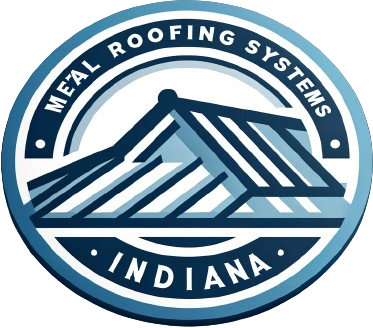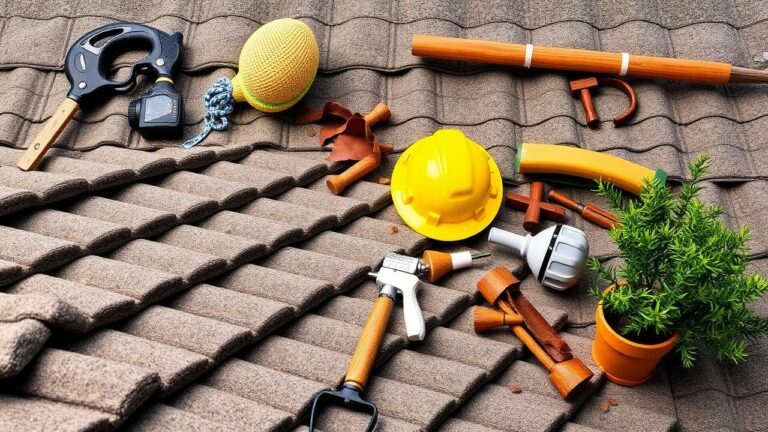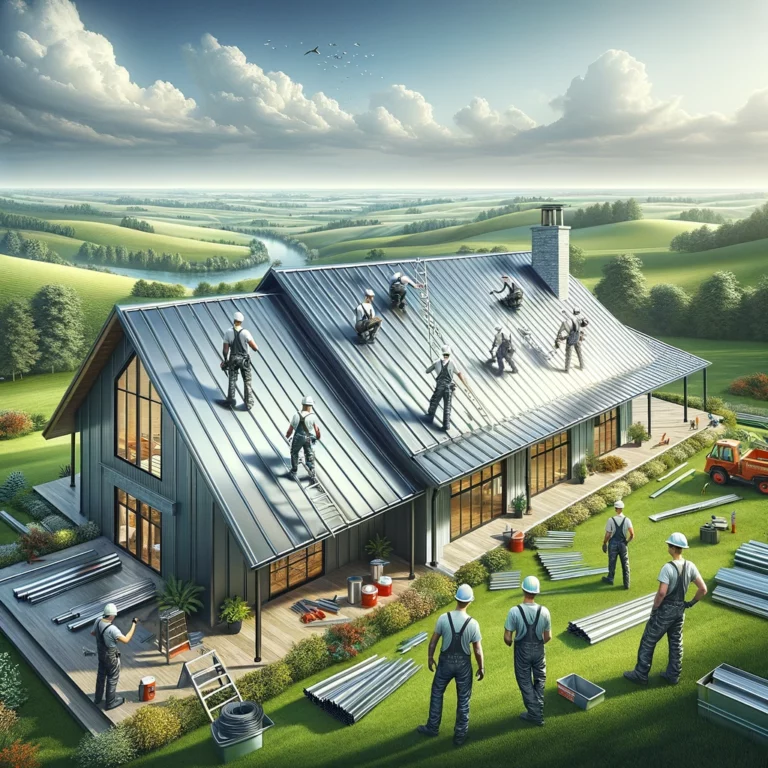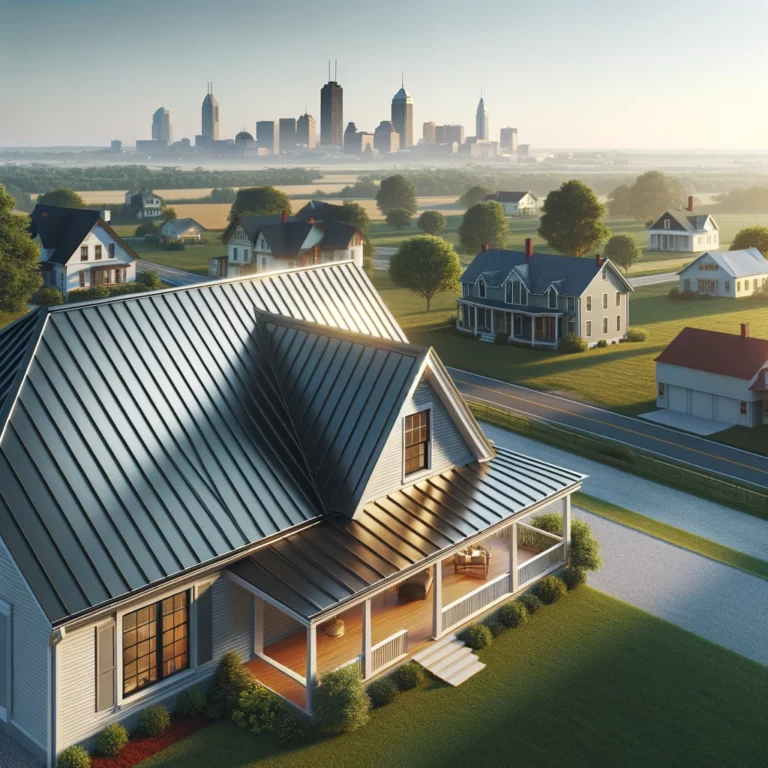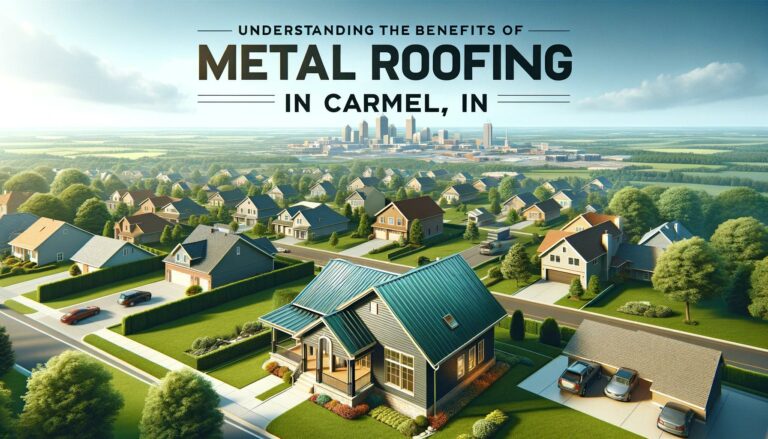Real-World Longevity: Case Studies of Metal Roofing Performance Over Decades
Real-World Longevity: Case Studies of Metal Roofing Performance Over Decades
Metal roofing embodies a fusion of durability, energy efficiency, and aesthetic versatility, making it a cornerstone in contemporary construction. This article ventures into an in-depth examination of metal roofing's enduring performance, underscored by decades of application across diverse environments. By dissecting various case studies, we unravel the pivotal elements that contribute to its longevity—ranging from the choice of materials and maintenance strategies to the impact of environmental conditions. This analysis not only highlights the robustness of metal roofing but also provides actionable insights for maximizing its lifespan, thereby offering invaluable guidance for those considering metal roofing for their construction needs.
What is metal roofing?
Metal roofing is a construction material made from metallic elements, designed for use as a protective and decorative outer layer on buildings. It stands out for its resilience, capable of withstanding severe weather conditions, and its longevity, often lasting decades with minimal maintenance. Metal roofs come in various types, including aluminum, steel, copper, and zinc, each offering unique benefits such as energy efficiency, corrosion resistance, and aesthetic appeal. This versatility makes metal roofing a preferred choice for both residential and commercial structures, providing a sustainable roofing solution that combines performance with environmental consciousness.
Importance of metal roofing in construction
The significance of metal roofing in construction transcends its basic function of shelter, emerging as a pivotal element in modern architectural design. Its durability ensures structures remain protected for decades, while its sustainability reflects a growing trend towards environmentally responsible building practices. Metal roofing's energy efficiency is another critical advantage, offering significant savings on heating and cooling costs. This combination of longevity, eco-friendliness, and cost-effectiveness positions metal roofing not just as a material choice, but as a strategic investment in the future of construction, aligning with both economic and environmental goals.
Durability and sustainability
Metal roofing stands out for its exceptional durability, capable of withstanding extreme weather conditions without succumbing to deterioration. This resilience not only extends the lifespan of a roof but also significantly reduces the need for replacements, thereby minimizing the environmental footprint associated with roofing materials. Moreover, the sustainability of metal roofing is underscored by its high recyclability. At the end of their useful life, most metal roofing materials can be fully recycled, contributing to a reduction in construction waste and fostering a cycle of reuse that aligns with eco-friendly building practices.
Energy efficiency benefits
A standout attribute of metal roofing is its inherent ability to reflect solar radiation, which plays a pivotal role in energy efficiency. This reflective quality helps maintain cooler building temperatures during hot seasons, reducing the dependence on air conditioning and, as a result, lowering energy consumption. In colder climates, metal roofing can be effectively paired with insulation systems to retain heat, enhancing heating efficiency. These features collectively lead to a significant reduction in energy costs, positioning metal roofing as both an economically and environmentally beneficial option for property owners.
Expected lifespan of metal roofing
The longevity of metal roofing is one of its most valued attributes, with an expected lifespan that can extend beyond 50 years when properly maintained. This durability is influenced by several factors, including material quality, maintenance frequency, and environmental conditions. High-quality materials like aluminum, steel, copper, and zinc, combined with regular maintenance, can significantly prolong a roof's life. Additionally, metal roofing's ability to resist environmental challenges such as UV exposure, high winds, and temperature fluctuations further enhances its lifespan. This makes metal roofing a cost-effective and reliable choice for long-term construction projects, offering homeowners peace of mind and reduced lifecycle costs.
Factors affecting longevity
The durability and lifespan of metal roofing are significantly influenced by three critical factors: material quality, maintenance frequency, and environmental conditions. Each of these elements plays a vital role in ensuring that a metal roof remains functional and aesthetically pleasing over the years.
Material quality
The foundation of a long-lasting metal roof lies in the quality of the materials used. Premium metals like aluminum, steel, copper, and zinc not only provide robust durability but also come with properties tailored to withstand specific environmental challenges. For example, copper and zinc naturally form a protective patina over time, enhancing their resistance to corrosion, while aluminum and steel can be treated to increase their resilience against UV damage and corrosion.
Maintenance frequency
Consistent maintenance is key to extending the life of a metal roof. This involves regular checks to identify and address any issues, such as leaks, rust formation, or structural damage. Addressing these issues promptly can prevent minor problems from escalating, ensuring the roof maintains its integrity and functionality for as long as possible.
Environmental conditions
The surrounding environment has a profound impact on the longevity of metal roofing. Coastal areas, with their salty air, pose a risk of accelerated corrosion, while industrial regions may expose roofs to harmful chemicals and pollutants. Moreover, roofs in areas prone to severe weather—be it heavy snow, hurricanes, or extreme heat—require additional considerations in material selection and construction methods to withstand these conditions effectively.
Types of metal in roofing
The selection of metal in roofing is a pivotal decision, influencing a roof's durability, aesthetic appeal, and resistance to environmental factors. Among the most utilized metals are:
- Aluminum, known for its lightweight and corrosion-resistant properties, making it ideal for coastal environments.
- Steel, celebrated for its strength, versatility, and recyclability, offering a robust solution for a variety of roofing needs.
- Copper, which stands out for its unparalleled longevity and the development of a distinctive patina over time, adding character to buildings.
- Zinc, favored for its self-healing capabilities against scratches and minor damages, ensuring a long-lasting, maintenance-free surface.
Each of these metals brings unique advantages to roofing projects, enabling customized solutions that cater to specific requirements around climate, design, and sustainability objectives.
Aluminum advantages
Aluminum shines in the metal roofing sphere for its lightweight nature and corrosion-resistant capabilities. Its suitability for areas facing harsh weather, especially coastal regions with salt spray, marks a significant advantage.
Lightweight and corrosion-resistant
The low weight of aluminum not only facilitates easier installation but also reduces the structural load on buildings, broadening its applicability. Its resistance to corrosion ensures enduring performance, safeguarding roofs against the elements for years.
Steel popularity
Steel earns its popularity through its versatility and recyclability, making it a go-to option for metal roofing. It balances strength and durability, fitting seamlessly into both residential and commercial projects while championing environmental sustainability.
Versatile and recyclable
Steel's flexibility in application, from classic panels to intricate designs, coupled with its high recyclability, underscores its role in sustainable construction practices by efficiently reducing waste.
Copper appeal
The allure of copper roofing lies in its longevity and the distinctive patina it acquires over time. This natural aging process not only enhances the visual appeal of structures but also fortifies the roof against environmental wear.
Longevity and patina over time
Copper's durability, potentially surpassing a century, and its evolving patina offer a dual benefit of aesthetic elegance and added protection, making it a premium choice for roofing.
Zinc benefits
Zinc is valued for its self-healing properties, enabling it to automatically repair scratches and minor damage over time. This unique feature, along with its durability and low maintenance, positions zinc as an efficient and enduring roofing material.
Self-healing properties
Zinc's capacity to self-repair its surface maintains its visual and structural integrity for decades, minimizing the need for ongoing repairs and affirming its status as a cost-effective solution for durable roofing systems.
Maintenance and metal roofing longevity
The longevity of metal roofing is intrinsically linked to regular maintenance. Proper care is pivotal in prolonging the life of these robust materials, ensuring they continue to provide both protection and aesthetic appeal for decades. Key maintenance practices, such as regular inspections, cleaning, and prompt repairs, are vital for spotting and addressing potential issues before they develop into serious concerns. By committing to a consistent maintenance routine, property owners and facility managers can enhance the durability and performance of their metal roofs, securing a valuable return on their investment in this resilient roofing option.
Regular inspections
Regular inspections serve as the first line of defense in preserving the integrity of metal roofs. Conducting these checks at least once a year allows for the early detection of potential issues, such as loose fasteners, sealant failures, and rust formation. Early identification enables timely intervention, preventing minor problems from escalating.
Cleaning methods
Maintaining the cleanliness of a metal roof is essential not only for its appearance but also for its longevity. Effective cleaning methods involve the removal of debris, dirt, and other substances that can accumulate over time. This practice is crucial in preventing the retention of moisture, which can lead to corrosion and other damage.
Repair strategies
Implementing proactive repair strategies is key to ensuring the durability of metal roofing. Promptly addressing issues like small leaks, dents, or scratches can significantly reduce the risk of extensive damage. It's important to use appropriate materials and techniques for repairs to maintain the roof's structural and aesthetic integrity, safeguarding its performance over the long term.
Environmental impacts on durability
The durability of metal roofing is profoundly affected by the environmental conditions it faces. Elements such as coastal areas, where salt corrosion is prevalent, industrial pollution, which can introduce harmful chemicals, and extreme weather conditions, ranging from heavy snowfall to hurricanes, all pose significant challenges. Implementing protective measures, like the strategic application of protective coatings and adhering to a regimen of regular cleaning, are vital for counteracting these effects. Moreover, selecting materials that naturally withstand specific environmental adversities can greatly bolster a roof's endurance. Recognizing and proactively managing these environmental impacts are key steps in ensuring that metal roofing maintains its integrity and functionality over the long haul.
Coastal areas and salt corrosion
In coastal areas, the presence of salt in the air can lead to salt corrosion, a significant threat to the integrity of metal roofs. Choosing materials and treatments with high salt corrosion resistance is essential for maintaining the roof's durability in these environments.
Protective coatings
Protective coatings are a critical defense mechanism for metal roofing, offering a shield against a variety of environmental threats, including moisture, pollutants, and UV rays. These coatings significantly prolong the roof's service life by preventing corrosion and degradation.
Industrial pollution effects
Exposure to industrial pollution can accelerate the wear of metal roofing by introducing corrosive elements. It underscores the need for materials and finishes that are specifically designed to resist chemical damage, ensuring the roof's longevity even in heavily polluted areas.
Regular cleaning to remove deposits
Maintaining the cleanliness of a metal roof through regular cleaning is vital. This process involves the removal of debris, dirt, and chemical deposits, which, if left unaddressed, can lead to corrosion and other forms of damage, compromising the roof's structural integrity.
Extreme weather challenges
Metal roofs are designed to face extreme weather challenges, including heavy snow, ice, high winds, and hail. Selecting the right materials and incorporating structural considerations are crucial steps in preparing roofs to withstand these harsh conditions effectively.
Reinforcement in hurricane-prone areas
In regions susceptible to hurricanes, reinforcement measures for metal roofing are indispensable. Implementing enhanced fastening systems and utilizing materials known for their wind resistance are vital strategies to protect roofs against the devastating impact of storms.
Case study: Coastal residential metal roofing
This case study highlights a residential property situated in a coastal area, where the saline air presents a formidable challenge to the longevity of building materials. The decision to install an aluminum roof was driven by its superior corrosion-resistant qualities, an essential attribute for withstanding the harsh coastal environment. Over a span of 30 years, this aluminum roofing has exhibited exceptional durability, necessitating minimal maintenance despite the aggressive conditions. This experience emphasizes the critical role of material selection in corrosion-prone areas, positioning aluminum roofing as a steadfast solution for coastal homes.
Aluminum roofing choice
The decision to opt for aluminum roofing was strategically made to combat the harsh corrosion challenges presented by the coastal setting. Aluminum, with its outstanding resistance to saline air, emerged as the ideal material to safeguard the home's longevity.
Reasons for selection
Aluminum was selected primarily for its exceptional resistance to salt corrosion, a critical concern in coastal regions. Its lightweight characteristics also facilitated an easier installation process and reduced the overall load on the building's structure, making it a comprehensive solution.
30 years of performance
Throughout three decades, the aluminum roof has showcased exceptional durability and reliability. It has withstood the coastal environment's rigors, maintaining both its structural integrity and aesthetic quality with little to no signs of degradation.
Minimal maintenance
The aluminum roof's maintenance requirements have been notably minimal. Its innate corrosion resistance and durability meant that only routine inspections and occasional cleanings were necessary to keep it in optimal condition, underscoring aluminum's value as a low-maintenance roofing solution.
Case study: Industrial area commercial roofing
This case study focuses on a commercial building situated in an industrial area, where it faces the relentless environmental pressures common to such locales, including elevated pollution levels and frequent chemical exposure. The decision to install a steel roof was influenced by steel's inherent strength and versatility, coupled with its capability to endure the harsh industrial conditions. A pivotal aspect of this choice was the application of specialized protective coatings that significantly boost the steel's resistance to both corrosion and chemical degradation. Over the course of 25 years, this steel roofing has shown exceptional resilience, preserving its structural integrity and aesthetic quality with just annual maintenance checks. This example highlights the critical role of both material selection and the application of protective measures in ensuring the longevity of roofing systems in demanding industrial settings.
Steel roofing selection
The selection of steel roofing was driven by its exceptional strength and versatility, qualities essential for enduring the rigors of an industrial environment. Its proven resilience against pollution and chemical exposure solidified its position as the optimal choice for this setting.
Coating types used
To further bolster the steel's endurance, specialized protective coatings were employed. These coatings are meticulously designed to fend off corrosion and chemical wear, significantly enhancing the roof's longevity and preserving its visual appeal.
25 years of performance
Throughout two and a half decades, the steel roofing has exhibited outstanding resilience. It has successfully withstood the demanding conditions typical of industrial areas, maintaining both its structural integrity and aesthetic quality, a testament to the efficacy of the chosen materials and coatings.
Annual maintenance checks
The sustained performance and durability of the steel roof are largely attributable to a rigorous regimen of annual maintenance checks. These inspections are critical for early detection and remediation of any issues, ensuring the roof remains in peak condition year after year.
Case study: Extreme weather region roofing
In this case study, we delve into a roofing solution tailored for a region plagued by extreme weather conditions, including relentless heavy snowfalls, severe storms, and powerful winds. The decision to implement copper roofing was influenced by its remarkable durability and visual appeal. Copper stands out for its resilience against harsh environmental conditions and its ability to develop a protective patina over time, enhancing its longevity. Over the span of 40 years, the copper roof has demonstrated exceptional performance, withstanding the elements with minimal maintenance and providing unwavering protection. This example underscores the criticality of material selection in accordance with the local climate, especially in areas facing severe weather challenges, to ensure the sustained effectiveness and durability of roofing systems.
Copper roofing choice
The selection of copper roofing was primarily driven by its unmatched durability and stunning aesthetic appeal, positioning it as the ideal candidate to tackle the region's harsh weather conditions. Copper's inherent resistance to environmental degradation and its capacity for graceful aging solidified its choice.
Aesthetic and durability considerations
Copper distinguishes itself not just through its visual appeal but also through its unique ability to develop a protective patina. This natural aging process not only augments the roof's aesthetic beauty but also significantly boosts its durability, offering a compelling blend of form and function.
40 years of performance
For over four decades, the copper roof has delivered exemplary performance, maintaining its structural and aesthetic integrity with minimal upkeep. This period of sustained excellence underscores copper's remarkable resilience and reliability as a roofing material.
Biannual inspections
Implementing biannual inspections has been crucial in preserving the copper roof's longevity and operational efficiency. These routine evaluations facilitate the prompt identification and rectification of any arising issues, thereby ensuring the roof's continuous optimal condition and extending its service life.
Lessons from case studies
The insights gleaned from these case studies underscore the paramount importance of material selection and maintenance in maximizing the longevity and efficacy of metal roofing across diverse environments. Whether facing the saline airs of coastal regions, the pollutants of industrial areas, or the harshness of extreme weather, the strategic choice of materials like aluminum, steel, and copper—each renowned for their unique attributes such as corrosion resistance, durability, and aesthetic appeal—is crucial for navigating environmental challenges. Furthermore, the focus on regular maintenance, ranging from annual to biannual inspections, emphasizes its critical role in maintaining the roof's structural integrity over the years. These case studies collectively highlight the need for a thoughtful approach to roofing, where understanding the specific demands of the local environment, coupled with the selection of suitable materials and adherence to a diligent maintenance regime, is essential for securing durable, high-performing roofing solutions.
Importance of material choice
The selection of material for metal roofing is a pivotal decision that significantly influences its durability, environmental resistance, and visual appeal. Opting for the right metal—whether it's aluminum for its exceptional corrosion resistance, steel for its robust strength, copper for its enduring longevity, or zinc for its unique self-healing properties—ensures that the roofing system can adeptly meet the demands of its specific environment. This careful consideration in material choice is key to enhancing performance and prolonging the roof's service life.
Role of maintenance
Maintenance is indispensable in safeguarding the longevity and functionality of metal roofing. Through routine inspections and timely repairs, potential issues can be detected and addressed before they develop into significant problems. Activities such as cleaning to eliminate debris and repairing minor damages are crucial in maintaining the roof's condition. This proactive approach to maintenance is vital for ensuring the roofing system continues to perform optimally over the years, thereby maximizing the value of the metal roofing investment.
Cost vs. longevity and maintenance
When considering metal roofing, a critical analysis of the initial cost versus the long-term benefits of longevity and reduced maintenance is essential. Although metal roofing may present a higher upfront expense compared to traditional materials, its potential to last over 50 years offers considerable long-term savings. The inherent durability of metal roofing diminishes the need for frequent repairs and replacements, contributing to its cost-effectiveness. Additionally, the minimal maintenance required further bolsters its economic advantage. This evaluation underscores that, over its lifespan, investing in metal roofing can prove to be more economical, providing a robust, low-maintenance solution that results in significant savings.
Long-term savings
Long-term savings emerge as a key benefit of metal roofing, driven by its remarkable lifespan and low maintenance needs. The infrequent necessity for repairs or replacements, coupled with minimal upkeep, translates into considerable economic benefits over time. This resilience and ease of maintenance ensure that the initial outlay for metal roofing becomes a worthwhile investment, offering savings that significantly outstrip those associated with traditional roofing materials over comparable durations.
Upfront cost comparison
In the realm of upfront costs, metal roofing is generally associated with a higher initial investment compared to conventional roofing solutions like asphalt shingles. However, this initial cost analysis must be broadened to encompass the total lifecycle expense of the roofing system. The enduring nature and robustness of metal roofing—attributes that lead to fewer replacements and diminished maintenance expenditures—render it a more cost-efficient option in the long haul, despite its higher upfront price tag.
Future trends in metal roofing
The horizon for metal roofing is marked by exciting innovations and trends that promise to elevate its functionality, sustainability, and aesthetic appeal. Technological advancements are anticipated to streamline installation processes and enhance the durability of metal roofs. The integration of solar technology presents a groundbreaking opportunity for energy efficiency, transforming rooftops into power-generating assets. Material innovations are expected to introduce options that are lighter, stronger, and more adaptable than ever before. Furthermore, the shift towards eco-friendly coatings is set to amplify the environmental benefits of metal roofing, including improved reflectivity and minimized heat absorption. Collectively, these trends herald a vibrant future for metal roofing, perfectly aligning with the increasing demand for sustainable and energy-efficient building solutions.
Technological advancements
Technological advancements are poised to transform the metal roofing landscape, emphasizing improvements in installation processes and roof durability. These innovations are expected to lead to roofing systems that are not only quicker and simpler to install but also exhibit enhanced resistance to environmental factors, ensuring longer lifespans.
Solar integration
The trend towards solar integration with metal roofing is a game-changer, combining the structural resilience of metal roofs with the capacity for solar energy generation. This integration is a step towards achieving greater energy efficiency and sustainability in buildings, making metal roofs an active participant in renewable energy solutions.
Material innovations
Material innovations are redefining the capabilities of metal roofing, with a focus on developing materials that are lighter, stronger, and more adaptable than ever before. These advancements promise to broaden the scope of metal roofing, making it suitable for a wider range of architectural designs and environmental conditions.
Eco-friendly coatings
The advancement of eco-friendly coatings marks a significant stride towards sustainability in metal roofing. These coatings are designed to enhance the environmental benefits of metal roofs, improving their reflectivity and minimizing heat absorption. The result is a more energy-efficient and environmentally responsible roofing solution.
